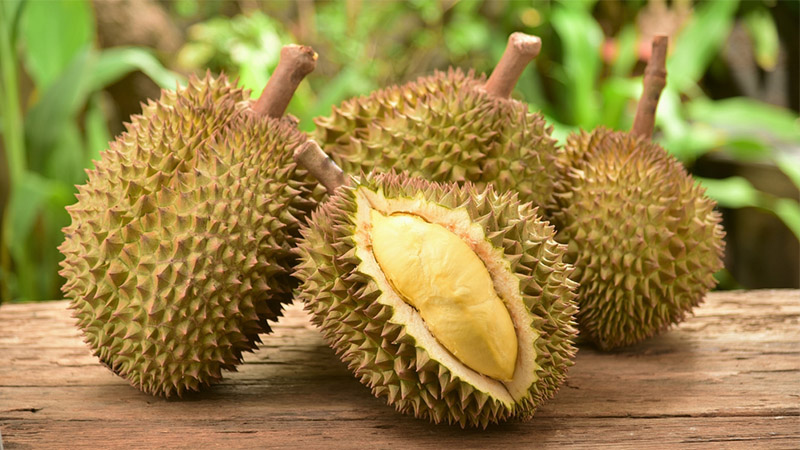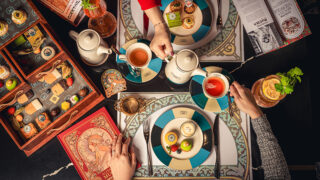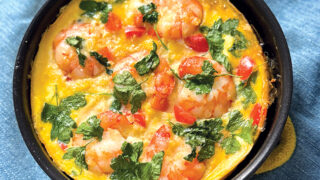Durian: it seems people living in Singapore either love them or hate them… or are afraid to try them. Here’s all you need to know about the spiky, stinky fruit from our very own Melinda Murphy.
#1 They’re available in many varieties
If you’ve tried one durian, you’ve tried them all, right? Wrong! Turns out, there are more than 100 named varieties of durian. Some are sweet, some are bitter. Some have white flesh while others sport pale yellow, orange or even red fruit. Each has a very distinct flavour, and yes, smell. So, if you’ve tried one and didn’t like it, perhaps you just didn’t try the right one. These are the varieties we try in the video above:
- “D13 – light and bittersweet”
- “Golden Phoenix – bitter”
- “MSW – strongest flavour”
#2 They’re native to several countries
Durians come from Malaysia, Borneo and Sumatra, but Thailand is now the biggest exporter, producing 700,000 tonnes per year. Most durians in Singapore come from Malaysia and are picked daily. In fact, the name “durian” is derived from the Malay word duri, which means “thorn” and was first used in the late 16th century. By the way, those thorns are sharp! Gloves are a must.
#3 They’re heavy, fleshy and seasonal
Durians typically weigh between one and three kilograms, depending on the variety, and the copious volume of flesh inside can be found in five different compartments. Durian trees are actually evergreens, and there are several seasons for durian, but high season is mid-year.

#4 They’re enjoyed at various stages of ripeness
A ripe durian will begin to crack, but some people also hit them with a knife and listen to test the ripeness – kind of like thumping a watermelon. In Thailand, people like the fruit a little more crisp, but here in Singapore, durian fans prefer the fruit to be gooey. If the fruit gets too ripe, it can actually ferment and develop alcoholic properties.
#5 They’re calorific
Yup, durians are high in calories. An average one kilogram durian has a whopping 1,350 calories (5,600kJ)! Durians are also very high in sugar, which turns into carbohydrates. In other words, they should be a treat, not a staple. On the plus side, the King of Fruit is also high in monounsaturated fats, which can be good for lowering your LDL.
#6 They’re high in nutrients
The good news is that durians have lots of nutrients, being naturally rich in vitamins A, B complex and C, and minerals such as magnesium, potassium, manganese and copper, as well as the amino acid tryptophan. Also on the plus side: they’re an excellent source of dietary fibre.
#7 They’re hard on your liver
Because durians have a lot of fat and sugar, they can be hard for your liver to process, particularly if you consume durian with alcohol at the same time. Contrary to myth, eating durian and drinking together won’t kill you, but you might find yourself a bit bloated and uncomfortable.
#8 They’re stinky
Yup, durians smell. Far better writers than me have tried to describe the odour with no luck – and for good reason, too. When a team of German scientists tried to figure out why the fruit is so whiffy, they identified 50 distinct odorous compounds, including four that were previously unknown to science! Animals can smell them from about a half a mile away. The strong odour is why they’re banned from public transport in Singapore.
#9 They’re not an aphrodisiac
Many believe durian has the same kind of qualities as oysters, strawberries and chocolate. Sorry, it doesn’t. (Bummer!)
#10 They’re waiting for you to give them a try!
Want to taste durian for yourself? We suggest starting with D13, a milder variety of the fruit. You can visit any durian stand in Singapore, or have it delivered. Durian Empire (fb.com/durianempiresg) in Punggol Point can even pack it the right way for a plane trip so it won’t smell.
Like this? Read more in our Wine and Dine section
Top high tea spots in Singapore – reviewed!
New nibbles: new restaurants to try
Latest bars and nightspots to try!





